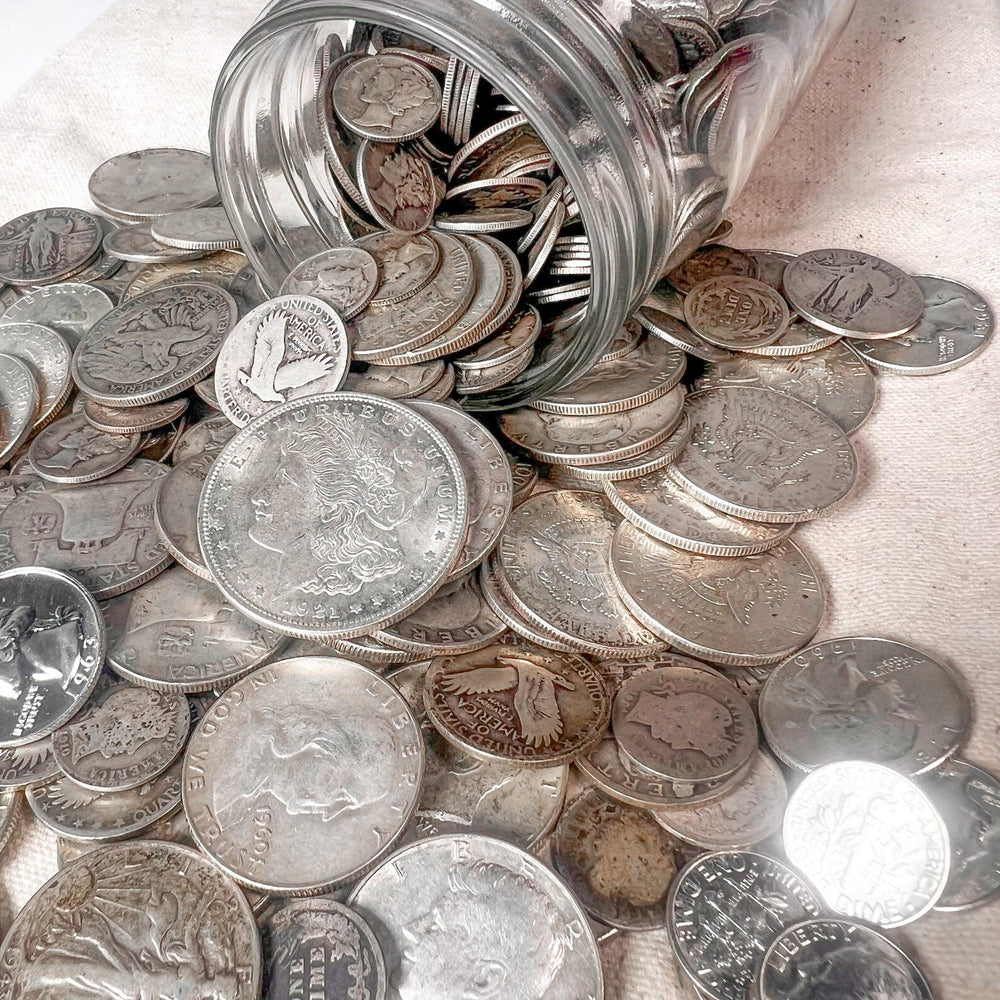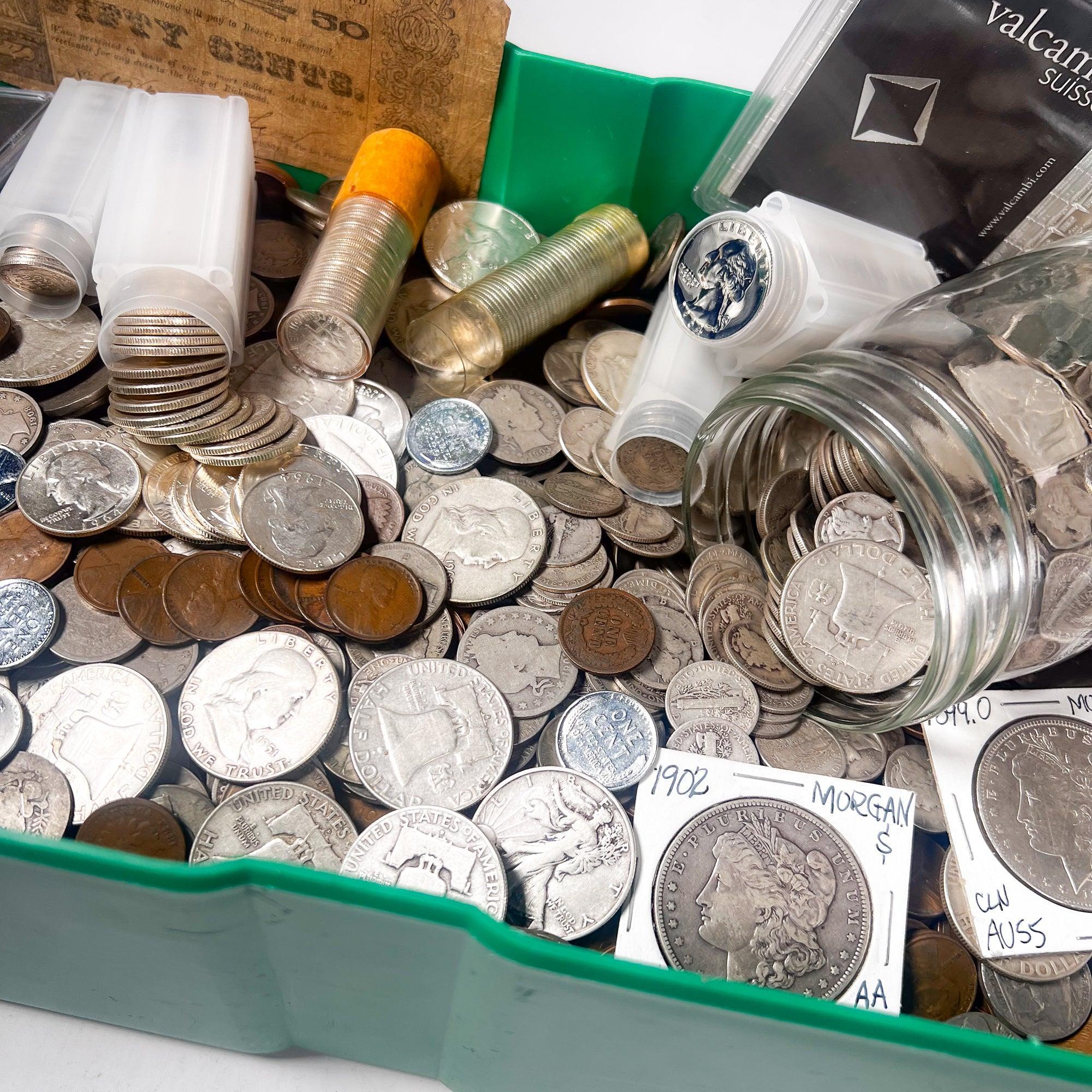The Definitive Guide to Profitable 90% Silver U.S. Coin Dates for Strategic Investors
Are you stacking "junk silver" for its silver content but suspect you’re missing out on bigger profits? While 90% silver U.S. coins are a solid hedge against inflation, their true potential lies in the numismatic value of specific dates and mint marks. These can fetch premiums far beyond their melt value, transforming your portfolio into a powerhouse of appreciating assets.
In this guide, The Definitive Guide to Profitable 90% Silver U.S. Coin Dates for Strategic Investors, we’ll uncover the key dates, mint marks, and strategies to maximize your returns by targeting coins with significant numismatic value.
Understanding 90% Silver U.S. Coins
What Is "Junk Silver"?
Before 1965, U.S. dimes, quarters, and half dollars were minted with 90% silver and 10% copper, tying their value to precious metals. The Coinage Act of 1965 shifted to copper-nickel clad due to rising silver prices, ending silver’s use in most denominations by 1971. These pre-1965 coins, known as "junk silver," are far from worthless, offering both intrinsic metal value and numismatic potential.
Key Series Include:
-
Mercury Dimes (1916–1945): Iconic and collectible.
-
Roosevelt Dimes (1946–1964): Common but valuable in high grades.
-
Standing Liberty Quarters (1916–1930): Rare and artistic.
-
Washington Quarters (1932–1964): Staple of junk silver with key dates.
-
Walking Liberty Half Dollars (1916–1947): Beloved for their design.
-
Franklin Half Dollars (1948–1963): Popular for proof issues.
-
Kennedy Half Dollars (1964 only): The sole 90% silver year.
-
Barber Coinage (1892–1916): Older and scarcer.
-
Seated Liberty Coinage (1837–1891): Numismatic treasures.
Each $1.00 face value contains approximately 0.715 troy ounces of pure silver, making these coins a reliable bullion investment.
Why Invest in 90% Silver?
-
Tangible Asset: A hedge against inflation and economic uncertainty.
-
Divisibility: Small denominations allow flexible transactions.
-
Historical Appeal: Connects to America’s monetary past.
-
Numismatic Potential: Certain coins offer significant premiums.
Melt Value vs. Numismatic Value
-
Melt Value: The silver content’s worth, calculated as:
(Coin’s Silver Weight) x (Spot Price)
E.g., a dime (0.0723 oz) at $28.00/oz = $2.02. -
Numismatic Value: The premium driven by rarity, condition, and collector demand. A rare coin like a 1916-D Mercury Dime can fetch thousands, far exceeding its $2 melt value.
Pro Tip: Focus on coins with numismatic premiums to amplify returns, balancing bulk junk silver with targeted key date acquisitions.
What Drives Numismatic Premiums?
To target profitable coins, understand the factors behind their value:
Mintage Figures: The Scarcity Factor
Low mintage equals high value. Coins with fewer minted examples are inherently rarer. For instance, the 1916-D Mercury Dime (264,000 minted) is far scarcer than the 1945 Mercury Dime (200M+ minted). Survival rates also matter—many coins were lost, melted, or heavily circulated, reducing available high-grade examples.
Research Tip: Check U.S. Mint records or the Red Book for mintage data to identify key date junk silver.
Condition: The Value Multiplier
Condition, graded on the Sheldon Scale (1–70), dramatically impacts value:
-
Good (G): Heavily worn, minimal premium.
-
Fine (F)/Very Fine (VF): Clear details, moderate premium.
-
About Uncirculated (AU): Slight wear, higher value.
-
Uncirculated (MS): No wear, significant premiums.
Special Designations:
-
Mercury Dimes (Full Bands): Clear fasces bands.
-
Standing Liberty Quarters (Full Head): Sharp head details.
-
Franklin Half Dollars (Full Bell Lines): Unbroken bell lines.
Damage like cleaning or scratches can destroy value. Professional grading by NGC or PCGS ensures authenticity and liquidity.
Market Demand: The Collector’s Drive
Robust collector interest sustains premiums. Series like Walking Liberty Half Dollars and Mercury Dimes enjoy enduring popularity due to their designs and history. Auction trends and NGC/PCGS population reports reveal demand strength, helping you target coins with stable or growing value.
Profitable 90% Silver Coin Dates & Mint Marks
Here’s a series-by-series breakdown of high-value dates and mint marks:
Mercury Dimes (1916–1945)
-
1916-D: Ultra-rare (264,000 minted), worth $1,500+ in VF-20.
-
1921 & 1921-D: Low mintages (1.23M and 1.08M), highly sought-after.
-
1942/1 & 1942/1-D: Overdate errors, commanding strong premiums.
-
Full Bands (FB): Boosts uncirculated value (e.g., 1945-D MS-65 FB: $150–$250 vs. $30–$50 without).
Standing Liberty Quarters (1916–1930)
-
1916: Tiny mintage (52,000), valued at thousands even in low grades.
-
1917 Type 1 (P, D, S): Rarer than Type 2, especially 1917-S.
-
1927-S: Low mintage (396,000), prized for strong strikes.
-
Full Head (FH): E.g., 1929-S MS-64 FH ($1,000+) vs. non-FH ($200).
Walking Liberty Half Dollars (1916–1947)
-
1916-S: Scarce (508,000 minted), high demand.
-
1921 & 1921-D: Very low mintages (1.05M and 208,000), rare in all grades.
-
1938-D: Last Denver issue (491,600), a series-ender.
-
Full Strike: Sharp details on Liberty’s hand and eagle’s feathers add value.
Barber Coinage (1892–1916)
-
1894-S Dime: Ultra-rare (24 proofs), worth millions.
-
1901-S Quarter: Low mintage (72,664), high premiums.
-
1892-O Half Dollar: Early New Orleans issue, sought-after.
Seated Liberty Coinage (1837–1891)
-
1873-CC No Arrows Dime: Extremely rare Carson City issue.
-
1878-S Half Dollar: Low mintage (900,000), scarce in all grades.
-
Note: Numismatic value dominates melt value due to age and rarity.
Other Opportunities
-
Commemorative Half Dollars (1892–1954): E.g., 1893 Columbian Exposition or 1935 Hudson, valued for low mintages.
-
Proof Coins: Pre-1965 proofs (e.g., 1942 Mercury Dime) fetch significant premiums.
Research Tools for Smart Investing
-
NGC/PCGS Resources: Use population reports and price guides to assess rarity and value.
-
Auction Data: Check Heritage Auctions or Stack’s Bowers for realized prices.
-
Mint Records: The Red Book provides mintage figures and historical context.
-
Forums: Engage with communities like CoinTalk for real-time insights.
Strategic Acquisition & Management
-
Smart Buying:
-
Source from reputable dealers like Midwest Precious Metals Exchange for NGC-certified coins.
-
Attend coin shows or bid at auctions like GreatCollections.
-
Verify authenticity and cross-check prices with auction data.
-
-
Preservation:
-
Store in archival holders (e.g., NGC/PCGS slabs, non-PVC flips).
-
Avoid cleaning—patina enhances value.
-
Use secure vaults or safe deposit boxes for valuable collections.
-
-
Selling:
-
Consign rare coins to auction houses for top prices.
-
Sell to dealers for quick liquidity or directly to collectors via forums.
-
Time sales during high-demand periods, factoring in fees.
-
-
Diversify: Balance junk silver for bullion stability with key date acquisitions for numismatic growth.
Build Your Profitable Portfolio
Investing in 90% silver U.S. coins offers both stability and opportunity. By targeting key dates like the 1916-D Mercury Dime or 1932-D Washington Quarter, you can unlock significant numismatic premiums. Start with trusted sources like Midwest Precious Metals Exchange, leverage NGC/PCGS data, and preserve your coins meticulously. With research and patience, your silver stack can become a dynamic, profitable portfolio.
Disclaimer: Consult a financial advisor before investing. Coin values and silver prices are subject to market fluctuations.












